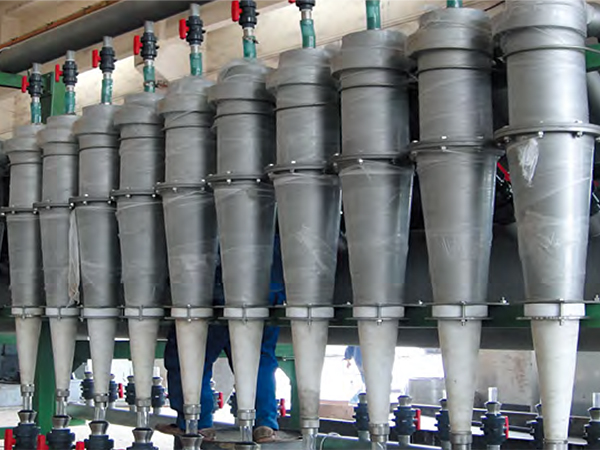In the papermaking and pulping process, the desander is the core equipment for purifying the pulp. It separates impurities of different densities through the principle of centrifugation to ensure that the pulp quality meets the production requirements. According to the differences in structure, function and process scenarios, slag removers are mainly classified into the following three categories:
I. Classification by structural features: The technological iteration of conical and cylindrical shapes
The conical slag remover is the current mainstream design. Its cone Angle is usually 8 to 13 degrees. After the slurry enters tangentially, it forms a high-speed vortex and separates impurities by centrifugal force.
The cylindrical slag remover was an early design. Due to the internal friction of the fluid, the rotational speed of the slurry decreases, and its slag removal efficiency is lower than that of the conical structure. At present, it is mostly used in low-precision pretreatment scenarios or connected in series with conical equipment to enhance the purification effect.

Ii. Classification by impurity type: Targeted purification of heavy and light impurities
The heavy impurity slag remover is dedicated to removing impurities with a density greater than that of the slurry, such as sand, gravel, and metal particles. The ZSC/HD series high-concentration slag remover adopts a volute type pulp feeding chamber design. It can separate heavy impurities larger than 0.1mm at a concentration of 2-5%. Its ceramic cone has a service life of more than 5 years and is widely used in waste paper deinking pulp production lines.
The light impurity slag remover is designed for adhesives, plastic sheets, hot melt adhesives, etc. with a density less than that of the slurry. For instance, the TNC-100 reverse lightweight slag remover, through reverse vortex technology, can remove over 90% of tiny and light impurities at a concentration of 0.5%, significantly reducing the paper machine's breakage rate. This type of equipment is particularly important in the production of packaging paper, as it can prevent light impurities from clogging the mesh section.
Iii. Classification by process concentration: Scenarios suitable for high concentration, medium concentration and low concentration
The high-concentration slag remover processes slurry with a concentration of 2-5%, maintaining the vortex intensity by extending the cone length and reducing fiber loss. The HD series equipment of Zhengzhou Leizhan Technology adopts a PLC automatic slag discharge system. It can continuously separate heavy impurities under a pressure of 300kPa, with a daily processing capacity of up to 8,000 liters per unit. It is suitable for high-impurity scenarios such as coal slurry and slag slurry.
The low-concentration slag remover processes pulp with a concentration of 0.3-1.0% and is mostly used in the pre-feed system of paper machines. The TFY series multi-functional low-concentration slag remover controls the coarse slag concentration through axial flushing water. It can still maintain separation at a concentration of 1.5%, and the fiber loss rate is less than 0.5%. It is widely used in cultural paper and household paper production lines.